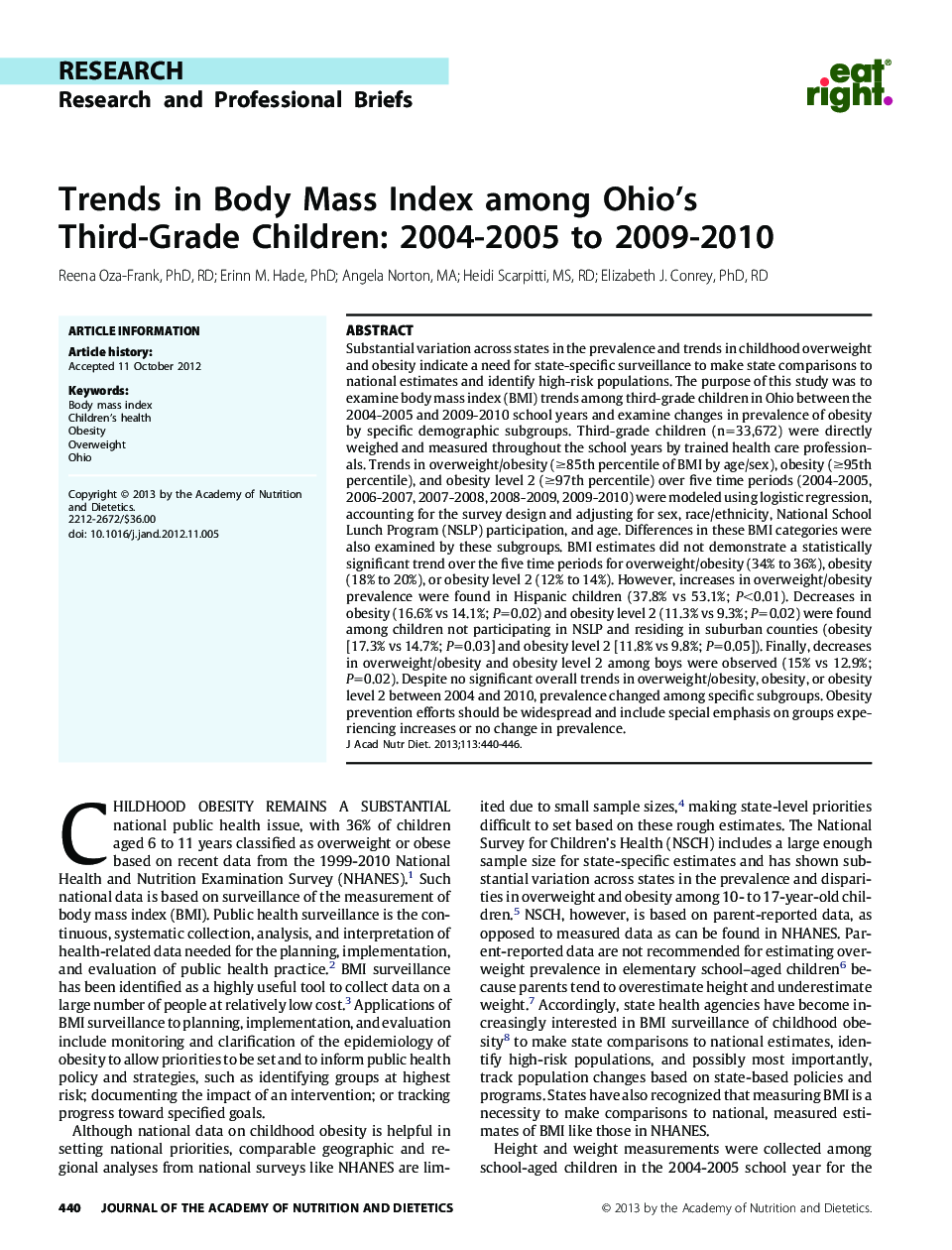| Article ID | Journal | Published Year | Pages | File Type |
|---|---|---|---|---|
| 2653505 | Journal of the Academy of Nutrition and Dietetics | 2013 | 7 Pages |
Substantial variation across states in the prevalence and trends in childhood overweight and obesity indicate a need for state-specific surveillance to make state comparisons to national estimates and identify high-risk populations. The purpose of this study was to examine body mass index (BMI) trends among third-grade children in Ohio between the 2004-2005 and 2009-2010 school years and examine changes in prevalence of obesity by specific demographic subgroups. Third-grade children (n=33,672) were directly weighed and measured throughout the school years by trained health care professionals. Trends in overweight/obesity (≥85th percentile of BMI by age/sex), obesity (≥95th percentile), and obesity level 2 (≥97th percentile) over five time periods (2004-2005, 2006-2007, 2007-2008, 2008-2009, 2009-2010) were modeled using logistic regression, accounting for the survey design and adjusting for sex, race/ethnicity, National School Lunch Program (NSLP) participation, and age. Differences in these BMI categories were also examined by these subgroups. BMI estimates did not demonstrate a statistically significant trend over the five time periods for overweight/obesity (34% to 36%), obesity (18% to 20%), or obesity level 2 (12% to 14%). However, increases in overweight/obesity prevalence were found in Hispanic children (37.8% vs 53.1%; P<0.01). Decreases in obesity (16.6% vs 14.1%; P=0.02) and obesity level 2 (11.3% vs 9.3%; P=0.02) were found among children not participating in NSLP and residing in suburban counties (obesity [17.3% vs 14.7%; P=0.03] and obesity level 2 [11.8% vs 9.8%; P=0.05]). Finally, decreases in overweight/obesity and obesity level 2 among boys were observed (15% vs 12.9%; P=0.02). Despite no significant overall trends in overweight/obesity, obesity, or obesity level 2 between 2004 and 2010, prevalence changed among specific subgroups. Obesity prevention efforts should be widespread and include special emphasis on groups experiencing increases or no change in prevalence.
